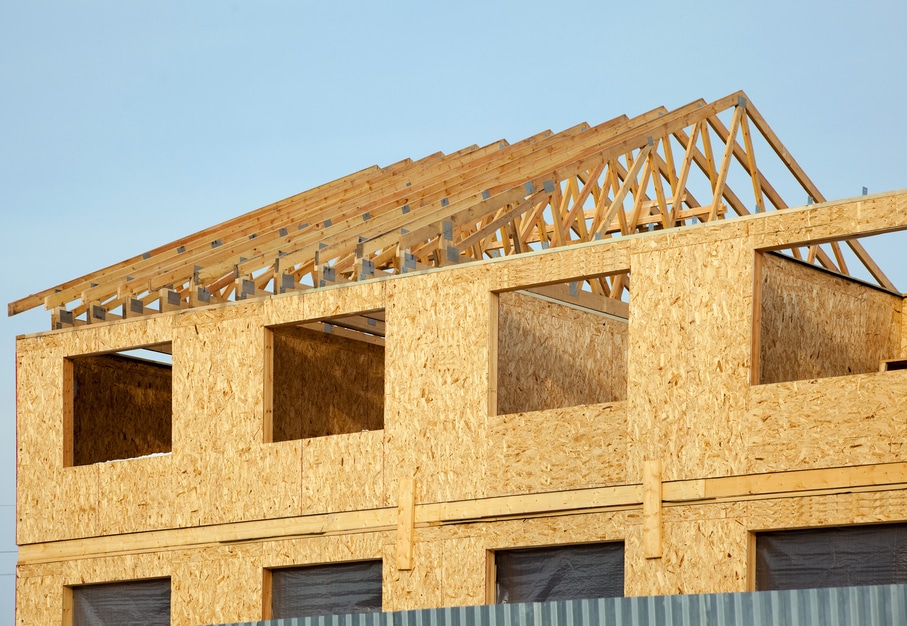Whether designing a new building roof or working on your home’s attic, knowing how to insulate an attic’s roof rafters helps ensure a safer, more comfortable building. Insulating your roof rafters provide a barrier between weather, animals, and other environmental incidents to keep your attic and home in excellent condition. In the article below, learn how to insulate an attic roof’s rafters and what roof rafters are.
Importance of Attic Roof Rafters
What are roof rafters? Roof rafters make up the framing and construction of your roof, protecting your home from the environment. Home builders put rafters together from scratch, starting with raw wood components and building them to the precise size of your home.
If you choose to finish your attic, you’ll need to insulate your roof rafters and cover them with drywall. Some homeowners use exposed roof rafters to decorate their homes or buildings, creating a natural or cabin-like effect.
You can build any structure with roof rafters, including:
- Houses
- Porches
- Sheds
- Cabins
- Garages

Types of Attic Roof Rafters
When inspecting your attic roof rafters, you’ll typically encounter principal and common types. Principal rafters refer to the largest pieces on either side of your roof, while the term “common rafters” applies to smaller portions placed between principal rafters. Other rafters used as structural attic roof supports include:
Auxiliary rafters, used as a support system for principal rafters
Hip rafters, which offer support at a 45-degree angle between the ridge board and outside corners
Valley rafters, which support rafters at a 45-degree angle on the building’s inside corners
Compass rafters, which have ornamental curves at the top or bottom
Knowing which roof rafter design you have helps you determine placement when installing insulation.
Helpful Reading: What is a Scuttle Attic?
The Process of Installing Attic Roof Rafters
Are you curious about how to build roof rafters? Roof rafters tend to follow standards the construction industry sets, including the space between each rafter and the roof rafter design. Learn how to build roof rafters with the instructions below.
One: Measure Your Roof
Ensuring you have the proper roof rafter size helps you meet building codes and avoid costly rebuilds in the future. Determine the size of the space you need to cover by measuring:
- The span, or the length of space between your building’s walls
- The rise, or how high you want the tallest point of your roof
- The run, or half the length of the span
- The line, or the length of the roof from top to bottom on a diagonal
- The pitch, or the result of dividing the rise by the run
Note that the pitch of your roof must be 2:12 or over for asphalt shingles and other roofing materials. According to the International Residential Code, anything lower must use flat roofing material. Learning how to insulate an attic’s roof rafters for a flat roof makes installation more complex than a higher roof.
Two: Buy Lumber
When you purchase lumber to build your roof rafters, use your measurements to determine the length and size of the boards. Planning for your roof rafter size helps determine the number of frames you need. If you plan to build as many frames as possible, you can buy weaker lumber, while fewer frames require stronger lumber.
Some homeowners opt to skip lumber and purchase metal roof rafters. These may seem like a good idea, but you can’t make adjustments or changes as easily as with lumber.
Three: Cut Your Lumber
Making the most of your lumber requires you to know how to cut roof rafters. Typical roof rafter cuts include:
- Plumb cuts, where your rafter meets the beam at the top of your rafters
- Tail cuts, where your rafter creates roof eaves
- Birdsmouth, seat, and heel cut,s all of which attach to the top of your walls
- Fascia cut, which makes room for a fascia and soffit as needed
- Before you begin cutting, draw your cuts on the lumber to ensure the measurements match your roof rafters framing plans.
Four: Install the Rafters
Lean two rafters against each another on one end of the roof, then do the same on the other (having a helper here makes this easier). Raise the center beam of your roof to the top of your rafters and nail them together, then do the same on the other end and add the rest of your frames.
The Difference Between Attic Roof Rafters and Trusses
Homeowners considering installing a new roof may consider trusses instead of roof rafters. Because trusses are prefabricated, they require less hands-on cutting and shaping than roof rafters. However, they hamper creativity, making it difficult to shape a unique roof.
Advantages of Attic Roof Rafters
Attic roof rafters have many advantages, including:
- Allowing more space in your attic
- Providing an extra layer of insulation
- Built by hand, allowing for quick turnaround and easy adjustments
Disadvantages of Attic Roof Rafters
Roof rafters have some downsides, including:
- Longer construction time
- Not as affordable as trusses
- Require a high level of carpentry experience
Frequently Asked Questions (FAQs) – Attic Roof Rafters
Some of the most commonly asked questions about installing attic roof rafters include:
Should you Insulate Attic Roof Rafters?
Yes, you should insulate roof rafters. Insulating roof rafters help your home retain your ideal temperature and dampen noises as it shifts and settles.
Are Rafters Load-Bearing?
Because your rafters only depend on the two walls parallel to each other for support, rafters are load-bearing.
How do you Strengthen Roof Rafters?
Through sistering, you can strengthen roof rafters by attaching a new frame to the center beam and bottom of your rafter framing.
Conclusion
Whether you’re building a new roof or upgrading your current one, knowing how to build it and how to insulate an attic’s roof rafters makes the process easier. Do you want expert builders to take the project over for you? Contact the experienced team at Attic Projects and get started today!




